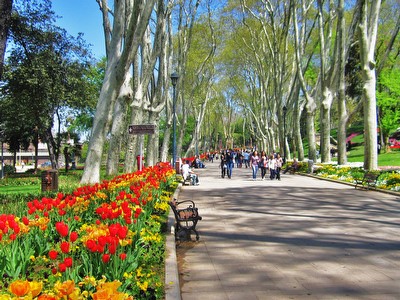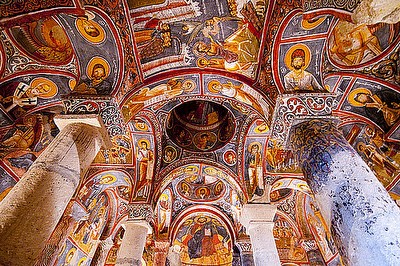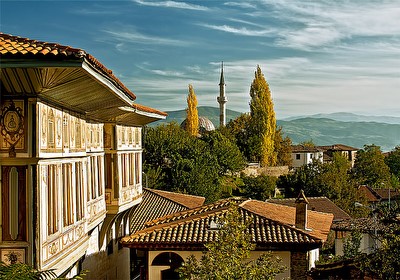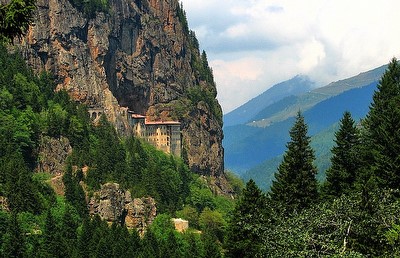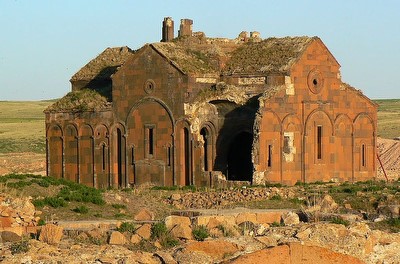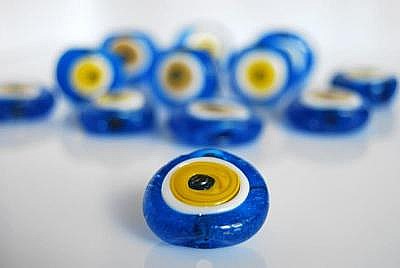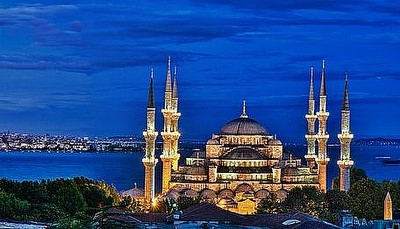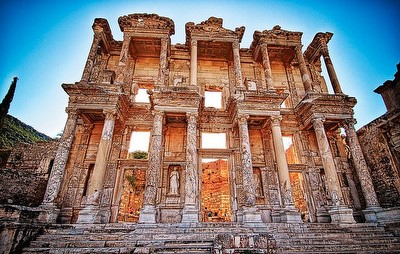WALKING WITH HISTORY, EPHESUS!
Sitting between the slopes of Mount Pion and Bülbül Daği, the once majestic city was the capital of the Roman province of Asia. Once an important trading center and the sanctuary of Artemis, it was an important pilgrimage site. Artemis was the ancient Anatolian Goddess of Fertility, aka, Cybele, since prehistoric times.
Ephesus was not just one city, but several. Because of the silting of the harbour, the city was moved a number of times and the coastline now lies some 8km from the site. The despotic and evil King Croesus conquered the city and forced its relocation from around the temple of Artemis. As one enters the site, from the car park, the 25,000 seat Great Theatre, acknowledged today as the largest in the world, which was constructed by Lysimachus, comes into view. This is the theatre in which the mob cried for Saint Paul’s blood. Built by Emmperor Arcadius, the Arcadian Way leads up from the ancient harbour to the theatre. Once a marbled colonnaded avenue paved with mosaics, it was lined with small houses and shops. Climbing the Marble Way, the ruts in the paving where carts would be draw to access the agora, from the harbour, carrying all manner of goods, are visible. The restored façade of the Library of Celsus lies ahead. After Alexandria and Pergamum this was the third largest library in the known world, housing in excess of 1,000 scrolls. Consul Tiberius Julius Aquila built it in honour of his father Gaius Celcus Polemeanus, who died in 110AD and was interred in the foundations.The façade is slightly curved, giving the illusion of a larger building. The centre columns are larger than the two outer pairs. It was built with a ventilation system consisting of a double exterior wall, thus protecting the valuable papyrus manuscripts for the cold winters and extremely hot summers. The façade is embellished by four statues, Arete [Valour], Ennoia [Thought] Episteme, [Knowledge] and Sopia,[Wisdom].The statues are replicas, the originals being in the Ephesus Museum in Vienna. To the right of the library stands the Gates of Mazeus and Mithridates, built by two grateful slaves after being released from bondage. Curetes Way leads up the hill past fountains, shops, temples and men only toilets. A small well stands inside. It was here that the statue of Pirapus, the god of sex was discovered and is now on display in the Ephesus Museum, Selçuk. The Corinthian Temple of Hadrian stands on the left. It was built in the second century AD but the friezes above the door, representing Androclus establishing the city, were a later addition. Ongoing excavations have unearthed terraced houses from around the first century AD and a large number of fine statues, mosaics and frescos have been unearthed from property of probably extremely wealth Romans. The Sacred Way travels along the north side of the State Agora. It was considered sacred because it led to the Shrine of Hestia, goddess of the hearth. The altar is located on the left, at the beginning of the Sacred Way, The flame came from Athens and was burned continuously by the followers of her cult. Next door to the temple is the Odeon, used for council meetings and concerts and beyond, there is the remnants of the East Gymnasium, the Baths of Varius and Magnesia Gate.
In 1936 British archaeologist and architect H. V. Morton wrote,
"Ephesus stands dignified and alone in its death, with no sign of life but a goatherd leaning on a broken sarcophagus or a lonely peasant outlined against a mournful sunset. Few people ever visit it. Ephesus has a weird, haunted look."
In 2009 Ephesus attracted a staggering 3,500,000 visitors.
Time to discover Mutlu's Ephesus


